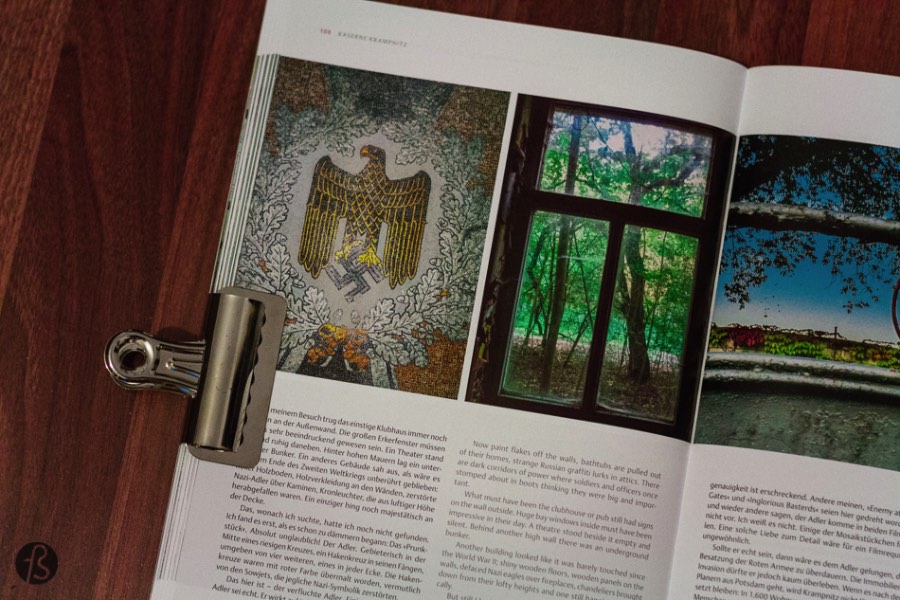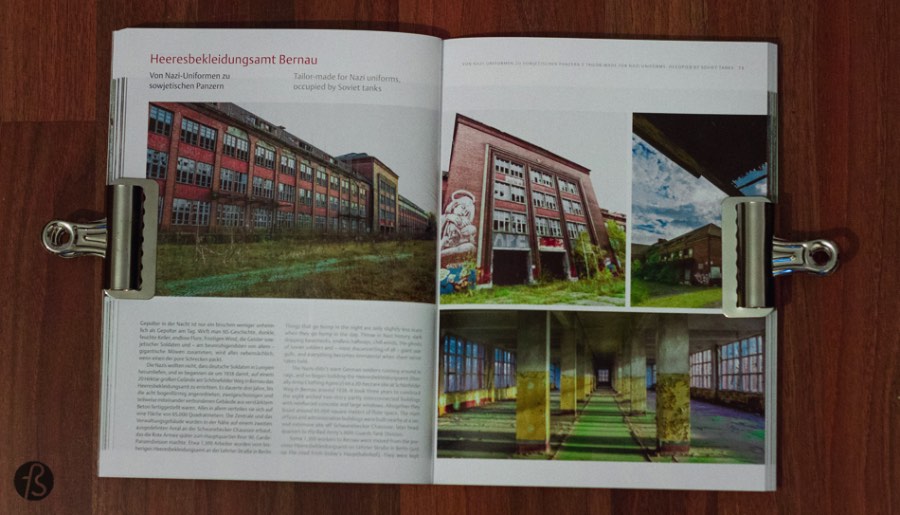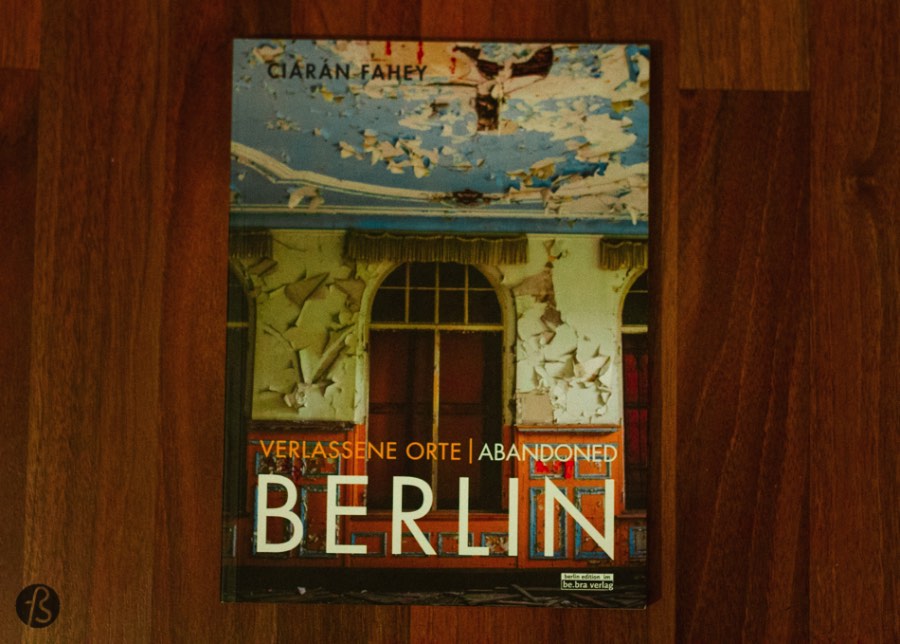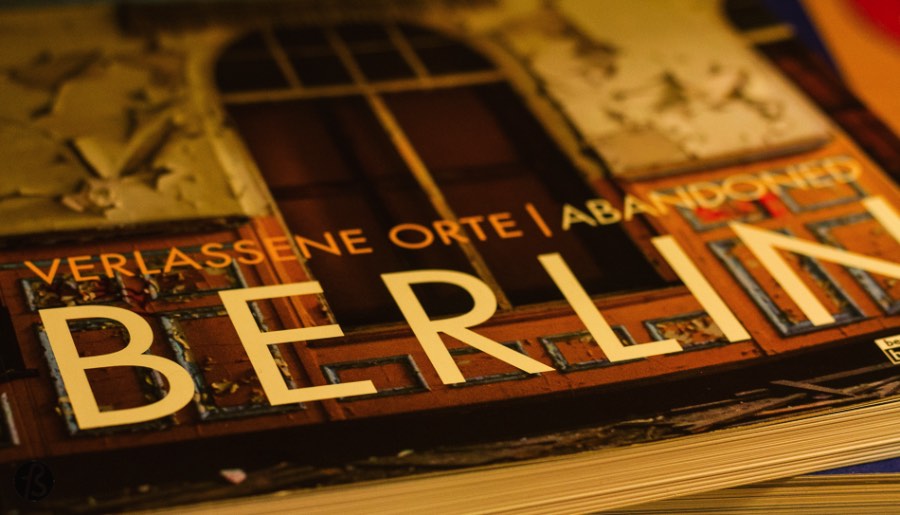I have been following the Abandoned Berlin blog since we moved to Berlin a little over 3 years ago. I don’t remember how I founded the blog, but I remember spending a lot of time reading everything I could. This is when I got bitten by the urban exploration bug of Berlin.
Let me stop everything and explain this to those who don’t know what I’m talking about. Abandoned Berlin is an urban exploration blog that documents all the abandoned buildings, airports, train tracks, parks, and former military places in and around Berlin.
Abandoned Berlin is amazing and became a reference for everybody interested in what happened in Berlin during the last century and how it changed the city.
Since I read on Twitter that Abandoned Berlin was about to become a book, I was looking forward to being available, and I got my copy as soon as it was online. After reading it all, I knew I had to spread the word about the book, so I got in touch with Ciarán Fahey and asked a few questions via e-mail.
Below you can see what he told me.
An Interview with Abandoned Berlin

How did you get into urban exploration?
I’m not sure I’m even into it now, to be honest. We’d need another conversation, preferably over a few beers, to figure out precisely what urban exploration is. Many of the sites I cover aren’t urban, and I’m not sure sneaking around trying not to be caught by security constitutes “exploring” – maybe it does. All this, what I do now, whatever you want to call it, started naturally enough.
Someone told me an old abandoned fairground was just rotting behind a fence in the forest, so curiosity kicked in, and I had to see it for myself. When I eventually got enough courage to hop the wall – I hadn’t been in Berlin for long, and I wasn’t sure what German security guards or dogs were like – I was astounded at what I found. It was Spreepark.
I’m a journalist, so I have a natural compulsion to dig for the stories behind things. When I got home, I researched and found the story was as incredible as the place itself. I wrote about it in a blog post, which was the start of Abandoned Berlin.
How was the first time “invading” and exploring a place? Where was it?
I think I answered that already, but when we were kids, we constantly invaded places: graveyards, ruins, and people’s gardens. I supposed we were also exploring the places we found and ourselves, testing the limits of what we could get up to.
Did you start the blog after this first time? Why did you end up writing the blog?
After Spreepark, someone else told me about Teufelsberg, the old American/British Cold War listening post, then someone else about Krampnitz, a military camp once used by the Nazis and later the Soviets. Then, there was the Iraqi embassy and the Garbáty cigarette factory. The more places I wrote about, the more I heard about – one led to another. Once I had a few places written about on my personal site, I transferred them all to Abandoned Berlin, and it took off from there.
I wanted to share the places with others and document them before they’re gone. They’re all doomed in one way or another. I felt it was better others enjoyed them, or at least had the chance to visit them, while I took plenty of photos because no place ever stays the same – the documentation part is essential to me.

How did you feel about turning Abandoned Berlin into a book? How was the experience?
Nerve-wracking. The problem with all these stories and histories is that you’re relying on other people for facts and accounts of what happened before. I wasn’t around when the Nazis were or when the city was divided between occupying powers, so I have to rely on second-hand, third-hand, maybe even fourth-hand information.
With a website, you can update a page if new or corrected information comes to light; with a book, you can’t. So, my greatest worry was ensuring everything I had written was genuine or as close to absolutely accurate as possible. Nearly every place I researched had conflicting and contradictory sources – the challenge for me was to give some more importance over others and weigh up the probability of someone getting something wrong. I found nearly every source had issues of one kind or another.
The best part was talking with people who could tell me directly how a place had been – like veterans at Teufelsberg or the granddaughter of a man whose villa was destroyed in the war.
Which was the weirdest place you ever explored?
Possibly the underground U-boat bunker in a forest in the middle of nowhere. It was getting dark outside, claustrophobic inside, and I wasn’t sure I’d find the hatch to get back out again. All I could hear was the “drip, drip” of water and the blood rushing in my ears.
There was water everywhere. I imagined myself stuck in the bunker forever, licking the walls for sustenance. Then I thought I heard voices, but they were only voices in my head. Luckily, I could find my way out again before I went completely mad.
Which place do you wish you could explore?
I have a very long list of places I still need to document. Time is the main problem. I have a kid and work that I need to keep if I want to provide for him.
How do you find all these places and the information about them?
You learn about places when researching others. For example, when researching military camps around Wünsdorf, I realized many others are in the same area. Many of these stories are connected. Once you open one door, you find two more behind it.
At this stage, I also get a lot of tips from people who may notice an abandoned place they know isn’t on the site. They want to know the stories behind them, too.
Urban Exploration seems to be really trendy in Berlin. Why do you think this happened?
It’s all my fault! No, I’m joking, but I think I’ve contributed to making these places more accessible to English-speaking people. The local German explorers doing this before me were more tight-lipped and guarded with their secrets and didn’t like sharing. I took an alternative approach, and the response from foreigners and Germans has been crazy.
Berlin also has this dark side, with its turbulent history. Everywhere you look, there is some ruin or another, victims of its past. People see these places, and of course, they’re curious too. You’d need to be made of stone not to be.
How do you see social media and the destruction of these places?
I’d be pretty happy if social media was these places’ most significant threat. Development, construction work, corruption, vandalism, and time itself all take their toll to a much greater extent than social media does.

Some people blame your blog as a source of destruction since you openly post addresses and how to get them. How do you see this, and why did you publish this information about the places?
I’ve had this accusation leveled at me quite a lot – usually by people who knew about the places before me and are upset their secrets are revealed.
I understand the concerns. I did weigh it up for a long time, if it was right to publish addresses or if I was doing more harm than good, and concluded that it was better for people to know about these places and discover them before they’re gone altogether. None of these places will stay the way they are. We’re talking about a finite resource, and I think they should be enjoyed while still possible.
Why would I keep them to myself? Is it better to leave a ruin crumbling in a forest with no visitors or to tell people about it so they can see it too? Should people stop visiting Machu Picchu or the Nazca Lines in Peru because they’re contributing to their demise with their presence? I think not.
I find the usual accusation that vandals will discover the places once their addresses are published moot, as vandals have always found them. They’re not exactly the type of people known for forward planning – they see, they vandalize. They don’t look up potential targets on the internet and then damage them.
I assume that most people visiting these places will treat them respectfully and carefully.
If somebody reading this wants to get into Urban Exploration, do you have any wisdom?
Just be fucking careful. None of these buildings are safe and could drop on your head anytime. A ceiling collapsed in a room I’d just left in a ruined villa in Köpenick once. I was being cautious, hadn’t poked the walls, had tiptoed. I was lucky it didn’t land on my head, or I wouldn’t be talking to you now. So that’s the most significant danger; watch out for that.
You can always speak with security if they catch you, but there’s no talking to a falling ceiling.

After reading this interview, I’m pretty sure that all you want to do is get the Abandoned Berlin book as soon as possible, and you can buy straight from the blog like I did.
If you want to know more about the book Abandoned Berlin, check out an interview on Deutsche Welle.
You should also follow Abandoned Berlin on Instagram and keep up with his endless list of abandoned places.